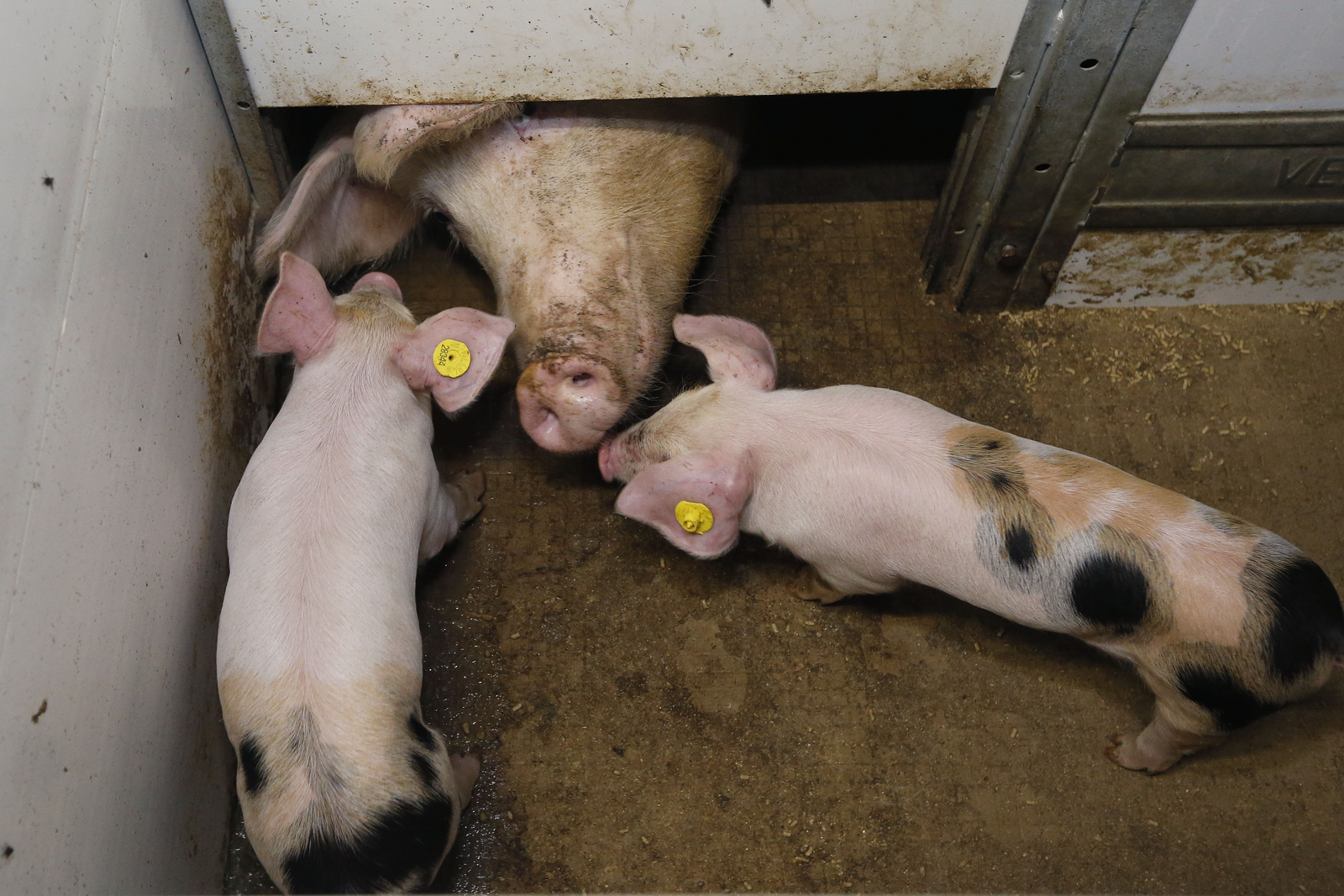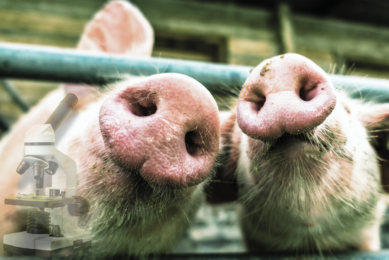Higher parity sows need higher nutrient levels

Research at the Purina Animal Nutrition Center in Gray Summit, Missouri, shows that sows in their seventh or higher parity consume less feed than younger sows. Vitamin- and mineral-dense rations can help older sows continue performing.
Higher parity sows play an important role in a balanced parity structure. They have achieved their breakeven point and any production over operating expense is profit. To help older sows continue performing, feed consumption should be monitored and the composition may need to be adjusted. “We measure daily lactation feed intake on every sow every day in our 200-sow unit,” says Brenda de Rodas, Ph.D., director of swine research at the Purina Animal Nutrition Center. “We full-feed all sows, measure the feed we provide them and then measure the feed they didn’t consume daily.”
Feed consumption by parity
The researchers compiled feed consumption data from 2004-2010 and compared feed intake by season of year, parity and litter size.
“All age groups typically consume less feed as temperatures increase, but the biggest difference we saw was in feed consumption by parity,” de Rodas says. “Parity 1, the gilts, consistently had the lowest feed intake, because they have less capacity for consumption. Parities 3 and 4 were the sows with the highest feed intake. The parity 7+ sows were the second lowest in feed intake.”
Adjusting for decreased consumption
Because overfeeding and over-conditioning of sows during gestation can lead to decreased voluntary feed consumption during lactation, producers often restrict the feed of older sows during gestation to prevent over-conditioning – as over-conditioning can lead to lameness and poor reproductive performance. “When we adjust the amount of feed to maintain BCS, we may also need to adjust the ration for nutrients,” says Jon Bergstrom, Ph.D., senior technical support manager for DSM Nutritional Products. “Oftentimes, higher parity sows are limit-fed based on energy alone. This can cause vitamin and mineral inadequacies – because, when the older sows are eating less feed, they are also consuming fewer vitamins and minerals per unit of metabolic bodyweight unless the ration is adjusted.”
Decrease in vitamin and mineral consumption
Research shared by DSM using PIC data shows a decrease in vitamin and mineral consumption per unit of bodyweight for older sows if the ration is not adjusted. The researchers estimated that third parity sows consume approximately 27% fewer vitamins and minerals per unit of bodyweight, and parity 5 sows consume up to 43% fewer vitamins and minerals than parity 1 sows.
“If you restrict-feed for energy over the lifetime of the sow, the amount of vitamins and trace minerals consumed per pound of bodyweight decreases significantly over time,” Bergstrom says. “Additional vitamins are especially important in higher parity sows because their litter sizes and birthweights typically trend higher. We can help sows receive the nutrients they require by feeding more vitamin- and mineral-dense rations to sows who consume less feed.”
The impact of vitamin-dense rations
Research conducted at the IRTA Monogastric Nutrition Unit in Spain from 2011 to 2012 underscores the importance of optimum vitamin nutrition on sow and litter performance. As compared to sows supplemented with a vitamin pre-mix to provide the average industry levels of vitamins, sows supplemented with higher vitamin levels:
- Lost only 2 pounds compared to 13.6 pounds for the control group during lactation
- Experienced a 5.3 day wean-to-estrus interval as compared to 8.5 days for the control group
- Weaned a greater number of pigs per litter: 10.9 vs. 10.2
- Weaned heavier pigs: 17.2 pounds vs. 16.7 pounds
“Providing vitamin levels above industry standards can help sows and their litters perform,” Bergstrom says. “All sows need high-quality vitamins; they’re essential for life. Providing more vitamin-dense rations may help higher parity sows consume the nutrients they require and better reach performance targets.”











